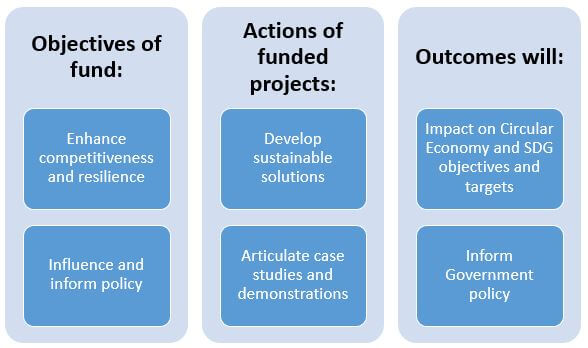The EPA’s Green Enterprise: Innovation for a Circular Economy is a funding call to support innovators in Ireland to develop, demonstrate and implement circular economy approaches in their business models. It is managed through the EPA-led Circular Economy Programme and is co-funded by EPA Research.
The programme is being reviewed by the EPA to consider where it fits within the overall funding landscape. As a result, there will be no funding call in 2024. For information on completed and ongoing projects please see links below.
